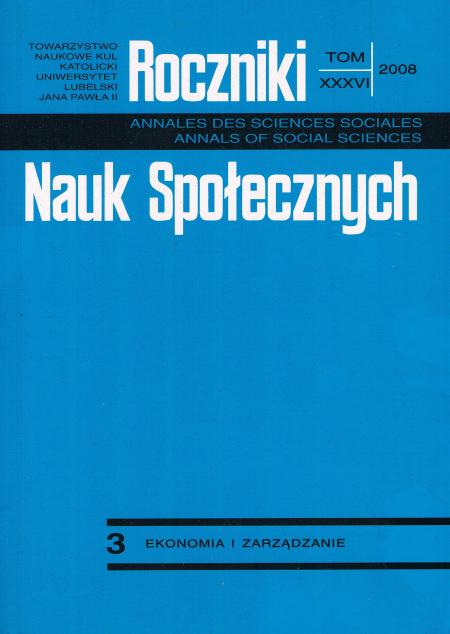Modele wyceny opcji na akcje
Stock Option Pricing Models
Author(s): Katarzyna Ziętek-KwaśniewskaSubject(s): Economy
Published by: Towarzystwo Naukowe KUL & Katolicki Uniwersytet Lubelski Jana Pawła II
Keywords: stock call and put option; option pricing model; the binomial model (Cox-Ross-Rubinstein's one); the Black-Scholes model; the Merton model; akcyjna opcja kupna i sprzedaży; model wyceny opcji; model dwumianowy (Coxa-Rossa-Rubinsteina)
Summary/Abstract: The increase of financial risk that has been observed for more than three decades has brought about the necessity of using new financial solutions increasing the efficiency of protection from the results of unexpected and disadvantageous events. A response to the investors’ new needs was a dynamic development of the market of derivative instruments, including options. Since investing in options, because of the financial lever, is highly risky, their pricing becomes a particularly significant issue. The article presents basic, most often applied mathematical models used for defining the value of stock call and put options. They include: the binomial model connected with the names of John Cox, Stephen Ross and Mark Rubinstein, the Black-Scholes model and the Merton model. In the case of the binomial model two approaches are presented that make it possible to assess the value of options – the one typical of the assumption concerning universal indifference to risk, and the one based on the method of option replication. According to the Black-Scholes model the price of options is the function of such factors as: the underlying price, the strike price, the time to expiration, the risk-free interest rate, and the volatility of the underlying asset. The Merton model, that is the most popular modification of the Black-Scholes formula, extends it to the case of options run for the shares of the companies constantly paying dividends.
Journal: Roczniki Nauk Społecznych
- Issue Year: 36/2008
- Issue No: 3
- Page Range: 117-137
- Page Count: 21
- Language: Polish

